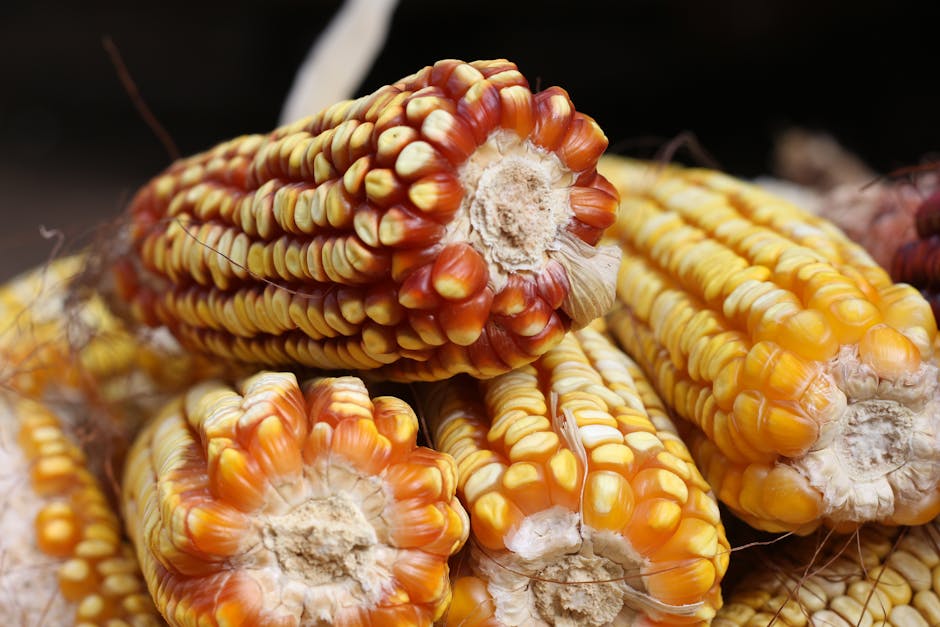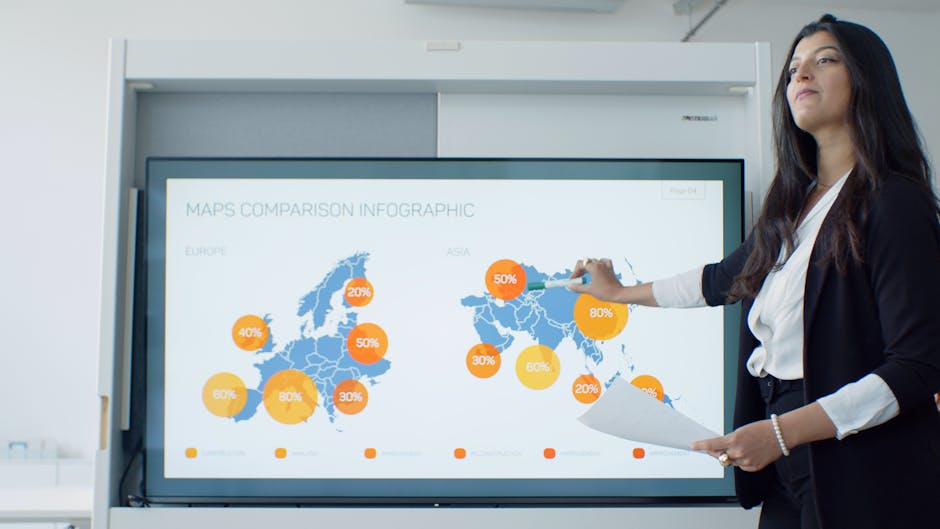Growth Marketing Strategies for 2025: How to Drive Sustainable Business Growth
Growth marketing is the engine behind today’s most innovative brands. As we move into 2025, the pace of change in digital marketing has accelerated, and businesses seeking next-level innovation must adapt to stay ahead. At InnExo, we believe that mastering growth marketing is the key to unlocking sustainable business expansion. In this comprehensive guide, we’ll explore the latest growth marketing strategies, tools, and trends shaping the future, and show you how to harness them for your organization’s success.
Understanding Growth Marketing in 2025

Photo by João Almeida on Pexels
Growth marketing has evolved beyond traditional marketing tactics. It’s a holistic, data-driven approach focused on the entire customer lifecycle—from awareness to advocacy. The focus keyword, growth marketing, is at the core of every forward-thinking business strategy, integrating experimentation, analytics, and customer-centricity to drive measurable results.
In 2025, growth marketing is characterized by:
- Personalization at scale: Leveraging data and AI to deliver tailored experiences that foster loyalty and engagement.
- Omnichannel integration: Creating seamless customer journeys across digital, physical, and social channels.
- Continuous experimentation: Testing new ideas rapidly to find what works and scaling successful tactics.
- Customer-centric innovation: Placing the customer at the heart of every decision, from product development to marketing communications.
Growth marketing is more than a buzzword—it’s a mindset that empowers brands to innovate, adapt, and thrive in a competitive marketplace.
The Power of Personalization: Building Deeper Connections

Personalization remains a cornerstone of effective growth marketing strategies. Consumers in 2025 expect brands to recognize their unique preferences and deliver relevant content, offers, and experiences. Research indicates that companies excelling in personalization consistently outperform their peers in revenue and customer loyalty.
To implement personalization effectively:
- Leverage first-party data: Collect and analyze customer data ethically to understand behaviors, preferences, and purchase history.
- Use AI-driven segmentation: Employ artificial intelligence to segment audiences and deliver highly targeted messages.
- Automate personalized journeys: Set up automated workflows that adapt to customer actions, ensuring timely and relevant interactions.
- Test and refine: Continuously A/B test personalized content to optimize for engagement and conversions.
Personalization isn’t just about addressing your customer by name—it’s about making them feel understood and valued at every touchpoint. As privacy regulations evolve, brands must also prioritize transparency and trust, transforming data privacy into an opportunity to build deeper relationships.
Harnessing AI and Automation for Exponential Growth

Photo by cottonbro CG studio on Pexels
Artificial intelligence (AI) and automation are revolutionizing growth marketing. In 2025, these technologies are not optional—they are foundational. AI enables marketers to analyze vast amounts of data, predict customer behavior, and automate complex tasks, freeing up time for strategic innovation.
Key applications of AI in growth marketing include:
- Predictive analytics: Forecasting trends and customer actions to inform proactive marketing strategies.
- Dynamic content creation: Generating personalized content, product recommendations, and offers in real-time.
- Chatbots and conversational AI: Enhancing customer service and engagement 24/7.
- Automated ad targeting: Optimizing ad spend and creative assets based on real-time performance data.
By integrating AI across your marketing stack, you can achieve higher efficiency, improved ROI, and a competitive edge. The future belongs to brands that embrace these tools early and use them to deliver value at every stage of the customer journey.
Data-Driven Decision Making: Turning Insights into Action

Photo by Max Fischer on Pexels
Data is the backbone of growth marketing. In 2025, marketers are inundated with information from multiple sources—web analytics, CRM systems, social media, and more. The challenge is not just collecting data, but transforming it into actionable insights that drive meaningful growth.
Best practices for data-driven growth marketing:
- Centralize your data: Use integrated platforms to unify customer data for a 360-degree view.
- Set clear KPIs: Define key performance indicators aligned with your business objectives.
- Embrace experimentation: Use data to inform rapid testing and iteration, optimizing campaigns for maximum impact.
- Foster a culture of learning: Encourage teams to share insights and learnings, driving continuous improvement.
Data-driven decision making empowers marketers to move beyond intuition and guesswork, ensuring every action is backed by evidence and aligned with strategic goals.
Omnichannel Experiences: Meeting Customers Where They Are

Photo by Rachel Claire on Pexels
Today’s consumers interact with brands across a multitude of channels—websites, social media, email, mobile apps, and in-store. Growth marketing in 2025 requires an omnichannel approach, ensuring a consistent and seamless experience at every touchpoint.
To deliver effective omnichannel experiences:
- Map the customer journey: Identify key touchpoints and understand how customers move between channels.
- Maintain consistent messaging: Ensure your brand voice and values are reflected across all platforms.
- Leverage technology: Use marketing automation and CRM tools to synchronize customer interactions and preferences.
- Measure and optimize: Track engagement and conversion metrics across channels, making data-driven adjustments as needed.
Omnichannel marketing is not just about being everywhere—it’s about being everywhere your customer expects, with the right message at the right time.
Influencer and Creator Partnerships: Amplifying Reach and Trust

Photo by Armand Valendez on Pexels
Influencer marketing continues to be a powerful growth lever in 2025. With consumers placing significant trust in recommendations from creators they follow, partnering with influencers can drive brand awareness, credibility, and conversions.
Effective influencer strategies include:
- Aligning with the right creators: Choose influencers whose audience and values align with your brand.
- Focusing on authenticity: Encourage genuine storytelling and product integration rather than scripted endorsements.
- Measuring impact: Track key metrics such as engagement, reach, and ROI to assess campaign effectiveness.
- Building long-term relationships: Invest in ongoing partnerships to foster deeper connections and consistent results.
Micro-influencers, with smaller but highly engaged audiences, can often deliver better results than celebrity endorsements. The key is to prioritize relevance and authenticity over sheer follower count.
Content Marketing & Storytelling: Engaging Audiences for the Long Term

Photo by Kampus Production on Pexels
Content remains king in the realm of growth marketing. In 2025, storytelling is the differentiator—brands that craft compelling narratives and deliver valuable content build stronger relationships and drive long-term growth.
Key elements of effective content marketing:
- Short-form video: With attention spans shrinking, platforms like TikTok and Instagram Reels dominate engagement.
- Educational resources: Thought leadership articles, webinars, and eBooks position your brand as an industry authority.
- User-generated content: Encourage customers to share their experiences, amplifying your reach and credibility.
- SEO optimization: Ensure your content is discoverable by optimizing for search intent and leveraging the latest SEO best practices.
Storytelling humanizes your brand and makes your message memorable. Focus on delivering consistent value, addressing customer pain points, and inspiring action through every piece of content.
Paid Advertising & Social Media: Maximizing ROI in a Competitive Landscape

Paid advertising remains a critical growth driver, but rising costs and increased competition demand smarter strategies. In 2025, successful brands combine paid media with organic efforts, leveraging data and AI to optimize performance.
Best practices for paid advertising and social media:
- Dynamic ad targeting: Use AI to deliver personalized ads based on real-time user behavior and preferences.
- Integrate social ads with organic content: Create cohesive campaigns that reinforce your brand message across paid and unpaid channels.
- Embrace new platforms: As Gen Z shifts from traditional search engines to social search (e.g., TikTok, Instagram), adapt your strategies to meet them where they are.
- Monitor and adjust: Continuously analyze performance data to refine targeting, creative, and budget allocation.
Combining paid and organic efforts amplifies your reach and ensures you stay top-of-mind throughout the customer journey.
Experimentation and Continuous Optimization: The Growth Mindset

Photo by Elena Druzhinina on Pexels
The most successful growth marketers in 2025 are relentless experimenters. They embrace a test-and-learn approach, using data to inform decisions and continuously optimizing campaigns for better results.
How to foster a culture of experimentation:
- Run A/B and multivariate tests: Test everything from subject lines to landing pages to identify what resonates best.
- Document learnings: Create a centralized repository of test results to inform future strategies.
- Encourage cross-functional collaboration: Involve teams from product, sales, and customer support to generate diverse ideas and insights.
- Prioritize agility: Be willing to pivot quickly based on new data and emerging trends.
Continuous optimization isn’t just about incremental gains—it’s about building a resilient, innovative organization that thrives amid change.
The Future of Growth Marketing: Embracing Innovation and Change

Photo by Ivan Samkov on Pexels
As we look ahead, growth marketing will continue to evolve at a rapid pace. Emerging technologies like generative AI, voice search, and immersive experiences will reshape how brands connect with customers. The brands that succeed will be those that stay agile, embrace innovation, and remain relentlessly customer-focused.
To future-proof your growth marketing strategy:
- Invest in ongoing learning: Stay informed about new tools, trends, and best practices.
- Adopt a customer-first mindset: Prioritize empathy, transparency, and value in every interaction.
- Leverage technology strategically: Use AI, automation, and data analytics to enhance—not replace—the human touch.
- Measure what matters: Focus on metrics that align with long-term business growth, not just short-term wins.
At InnExo, we believe that next-level innovation starts with a commitment to growth marketing excellence. By adopting these strategies, your business can unlock new opportunities, drive sustainable growth, and lead the way in 2025 and beyond.
Sources
- https://www.deloittedigital.com/nl/en/insights/perspective/marketing-trends-2025.html
- https://mountain.com/blog/growth-marketing-strategy/
- https://www.wsiworld.com/blog/the-future-of-marketing-strategy-5-predictions-for-2025
- https://digitalmarketinginstitute.com/blog/digital-marketing-trends-2025
- https://www.youtube.com/watch?v=0sXYuIHPVik





